
Roots
There exists a quiet hum beneath the surface of our daily lives, a resonance often felt but seldom articulated with clarity. It speaks of ancestral whispers carried through generations, of sun-drenched rituals, and the deep, abiding connection between who we are and the strands that crown our heads. For those whose hair defies the conventional straight line, whose coils and kinks speak a language of their own, this connection becomes not merely a matter of personal preference, but a profound cultural declaration. It is an understanding that begins not with a product, but with the very genesis of a strand, tracing its lineage back through time and tradition.
To truly appreciate the living crown, one must first consider its foundational makeup. Textured hair, a marvel of biological architecture, possesses a unique elliptical follicle shape, dictating its characteristic curl pattern. This elliptical shape means the hair shaft itself is not perfectly round, but rather flatter in cross-section, causing it to curl or coil as it grows.
The distribution of keratin, the protein that forms hair, also plays a part, often being unevenly distributed along the length of the strand, contributing to areas of differing strength and flexibility. Understanding these inherent qualities provides the first step in nurturing hair that has been misunderstood by mainstream beauty for far too long.
The very architecture of textured hair, from its elliptical follicle to the distribution of keratin, speaks to a unique biological marvel.

Hair Anatomy and Physiology Specific to Textured Hair
The journey of textured hair begins deep within the scalp, in structures often overlooked in broader discussions of beauty. Each hair strand emerges from a follicle, and for those with coils and kinks, these follicles are typically curved, creating a spiral path for the growing hair. This curvature causes the hair to bend and twist upon itself, forming the distinct patterns we recognize.
The outermost layer of the hair, the cuticle, composed of overlapping scales, tends to lift more readily in highly textured hair due to these bends and turns. This lifted cuticle, while a natural part of its structure, can contribute to moisture loss and a perception of dryness if not adequately addressed through thoughtful care.
Within the hair shaft, the cortex, the middle layer, houses the melanin responsible for hair color. The arrangement of cortical cells within textured hair also differs, influencing its elasticity and strength. The innermost layer, the medulla, may or may not be present throughout the entire length of a strand, its presence or absence affecting the hair’s overall density and thermal conductivity. These microscopic distinctions underscore the need for specialized approaches, moving beyond generic recommendations to a truly informed relationship with one’s hair.

Textured Hair Classification Systems
The world of textured hair is as diverse as the cultures that celebrate it, leading to various attempts at classification. Perhaps the most widely recognized system categorizes hair into types 1 through 4, with subcategories A, B, and C to denote increasing tightness of curl or coil. Type 1 represents straight hair, while type 2 covers waves, type 3 encompasses curls, and type 4 describes coils and kinks.
- Type 2 Hair ❉ This category describes wavy hair, ranging from loose S-shaped waves that lay close to the head (2A) to more defined waves that begin closer to the root (2B), and finally, distinct, deeper S-waves (2C) that can sometimes be mistaken for loose curls.
- Type 3 Hair ❉ This section addresses curly hair, from loose, bouncy curls (3A) with a circumference similar to a large sidewalk chalk, to tighter, springier curls (3B) that might resemble a Sharpie marker, and very tight, corkscrew curls (3C) the size of a pencil.
- Type 4 Hair ❉ This segment speaks to coily and kinky hair, starting with tight S-patterns (4A) that are visible, moving to Z-patterns (4B) where the bends are sharper and less defined, and finally, very dense, tight Z-patterns (4C) with little to no visible curl definition, often experiencing significant shrinkage.
While these classifications offer a useful starting point for understanding general characteristics, they represent a simplification of a far more complex reality. Hair can exhibit multiple patterns on a single head, and porosity, density, and strand thickness often play a more significant role in determining effective care practices than curl pattern alone. The true spirit of understanding textured hair lies not in rigid categorization, but in sensitive observation of individual strands and their needs.

The Essential Lexicon of Textured Hair
To navigate the landscape of textured hair care with confidence, a specific vocabulary becomes invaluable. Terms such as ‘porosity,’ referring to the hair’s ability to absorb and retain moisture, are fundamental. Low Porosity Hair, for instance, has tightly bound cuticles that resist moisture penetration but also retain it well once absorbed.
High Porosity Hair, conversely, has a more open cuticle, readily absorbing moisture but losing it just as quickly. Understanding one’s hair porosity can transform product selection and application.
Other key terms include ‘density,’ which refers to the number of individual hair strands on the scalp, and ‘strand thickness,’ describing the width of a single hair fiber, often categorized as fine, medium, or coarse. ‘Shrinkage,’ a characteristic experience for many with coily and kinky hair, describes the phenomenon where wet hair appears significantly shorter than its true length due to the coil pattern compressing. ‘Co-washing,’ the practice of washing hair with conditioner instead of shampoo, addresses the need for gentle cleansing that preserves natural oils. These terms, far from being mere jargon, form the language of sensitive, informed care.

Hair Growth Cycles and Influencing Factors
Hair growth, regardless of texture, follows a cyclical pattern comprising three main phases ❉ anagen, catagen, and telogen. The Anagen Phase is the active growth period, lasting anywhere from two to seven years. The Catagen Phase is a transitional stage, lasting about two to three weeks, during which hair growth stops and the outer root sheath shrinks. The Telogen Phase is the resting stage, lasting around two to four months, after which the hair sheds and a new hair begins to grow in its place.
For textured hair, this cycle can be particularly sensitive to external influences. Over-manipulation, excessive heat, and chemical treatments can disrupt these cycles, leading to breakage and slowed growth. Genetic predispositions play a significant role in determining curl pattern, density, and potential length.
Nutritional deficiencies, stress, hormonal fluctuations, and certain medical conditions can also significantly impact hair health and growth. A holistic approach to hair care acknowledges these internal and external forces, seeking balance beyond topical treatments alone.
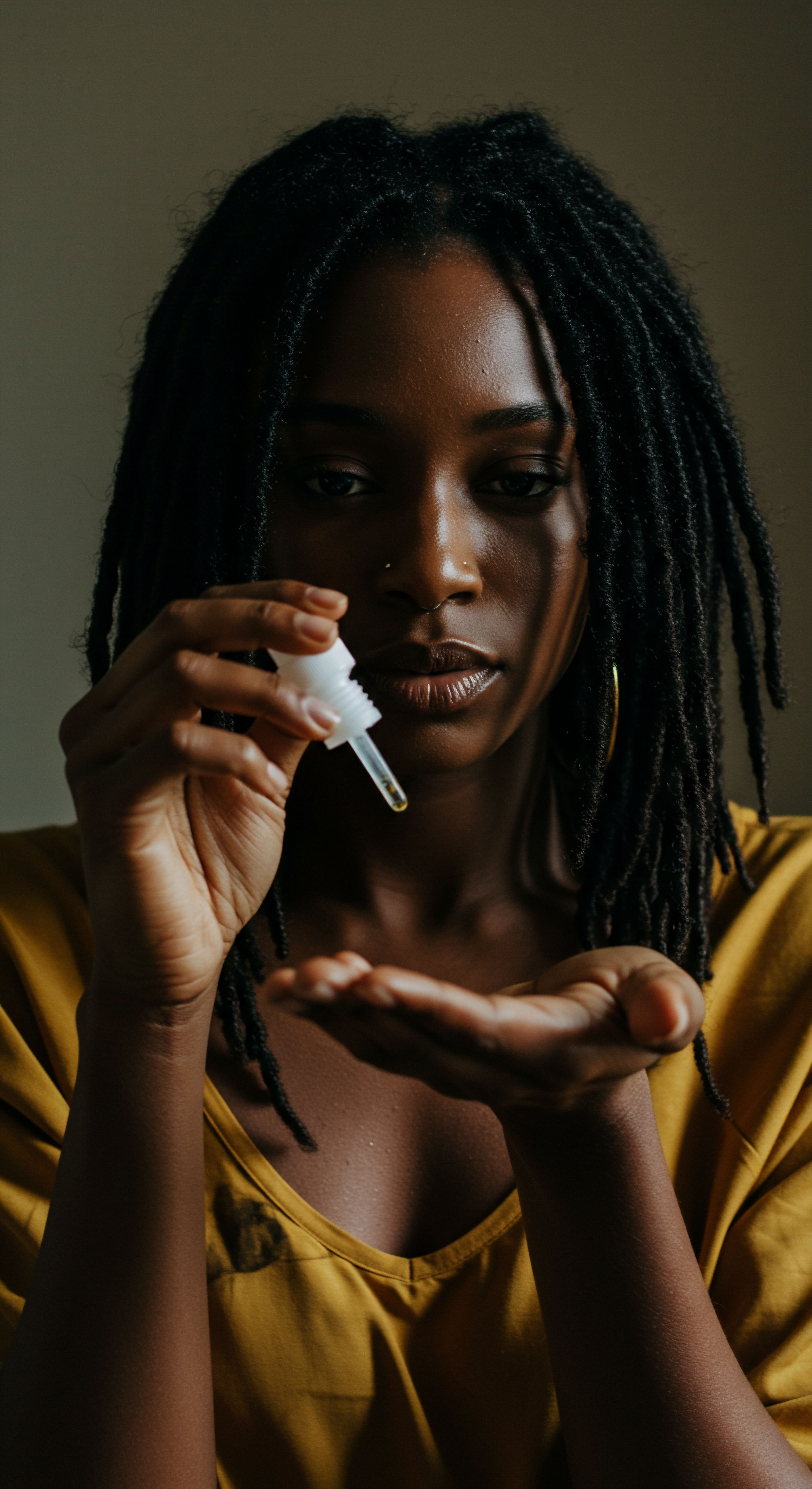
Ritual
As we move from the foundational understanding of textured hair, a new appreciation for its daily existence emerges, particularly in the realm of practices that nourish and adorn. The quiet moments spent with our strands, whether cleansing, styling, or simply protecting them, transcend mere routine. These acts become a deliberate conversation with our heritage, a mindful engagement with beauty traditions that have been refined over centuries. It is in these rituals that the theoretical understanding of hair’s structure finds its practical, lived expression, guiding us towards methods that honor its unique qualities and cultural significance.
The spectrum of styling for textured hair is vast, a testament to ingenuity and adaptability. From protective styles that safeguard delicate strands to natural looks that celebrate intrinsic curl, each method carries a story. These practices are not arbitrary; they are responses to the hair’s inherent nature, to environmental factors, and to the cultural narratives that have shaped beauty ideals. The tools employed, from wide-tooth combs to satin scarves, are not mere accessories; they are extensions of a long lineage of care, each serving a specific purpose in the delicate balance of maintenance and adornment.
Daily acts of hair care transform into a deliberate conversation with heritage, honoring unique qualities and cultural significance.

Protective Styling Encyclopedia
Protective styles stand as a cornerstone of textured hair care, designed to minimize manipulation, guard against environmental damage, and promote length retention. These styles tuck away the ends of the hair, which are the oldest and most fragile parts of the strand, reducing exposure to friction and breakage. Braids, in their myriad forms, represent one of the most ancient and versatile protective options.
Cornrows, originating from various African cultures, offer a neat, low-maintenance solution, their patterns often carrying cultural meaning, signifying status, age, or tribal affiliation. Box braids, Marley twists, and Senegalese twists provide similar benefits, allowing for longer wear and creative expression.
Beyond braids, twists offer another protective avenue. Two-strand twists, flat twists, and coil twists keep hair bundled and protected. Faux locs and goddess locs provide a temporary way to experience the aesthetic of locs while allowing the natural hair to rest.
Updos and buns, when created without excessive tension, also serve as effective protective styles, keeping hair contained and away from daily stressors. The selection of a protective style often hinges on the desired longevity, the health of the hair, and the cultural context of the wearer, each choice a silent affirmation of identity.

Natural Styling and Definition Techniques
Celebrating textured hair in its natural state involves techniques that enhance its intrinsic curl or coil pattern. The wash-and-go, a seemingly simple approach, requires a deep understanding of product application and hair behavior to achieve definition without frizz. This often involves applying leave-in conditioners and stylers to soaking wet hair, allowing the natural pattern to form as it dries. The shingling method, a more meticulous application, involves raking product through small sections of hair, manually defining each curl clump.
Twist-outs and braid-outs offer another path to definition, creating stretched, elongated curl patterns. Hair is twisted or braided while damp, allowed to dry completely, and then carefully unraveled to reveal soft, defined waves or curls. Rod sets, utilizing flexi-rods or perm rods, allow for the creation of uniform curls, particularly effective for looser textures or for adding consistent curl to stretched hair. These methods, while varying in complexity, all aim to honor the hair’s natural inclination, allowing its authentic beauty to shine.

Wigs and Hair Extensions Mastery
The utilization of wigs and hair extensions holds a significant place within textured hair traditions, serving purposes ranging from protective styling to dramatic aesthetic transformation and cultural expression. Historically, wigs and extensions have been used across many African societies for ceremonial purposes, as indicators of social status, or simply for beauty and adornment. Today, they continue this legacy, offering versatility and protection for natural hair.
Wigs provide a complete covering for natural hair, shielding it from environmental stressors and allowing for minimal manipulation. They come in an astounding array of textures, lengths, and styles, from realistic human hair units that mimic natural coils to vibrant synthetic creations. Lace Front Wigs, with their delicate, sheer material at the hairline, offer an incredibly natural appearance, allowing for diverse parting and styling options. Full Lace Wigs extend this natural look across the entire scalp, providing even greater flexibility.
Hair Extensions, on the other hand, integrate with one’s own hair to add length, volume, or color. Weaving, a popular method, involves braiding natural hair into cornrows and then sewing extensions onto these braids. This method is highly protective, as the natural hair is completely enclosed. Clip-ins offer a temporary, non-committal way to add volume or length, easily applied and removed.
Tape-ins provide a flatter, more seamless look, adhered with medical-grade tape. The mastery of these techniques allows for endless creative possibilities, enabling individuals to express different facets of their identity without compromising the health of their own hair.
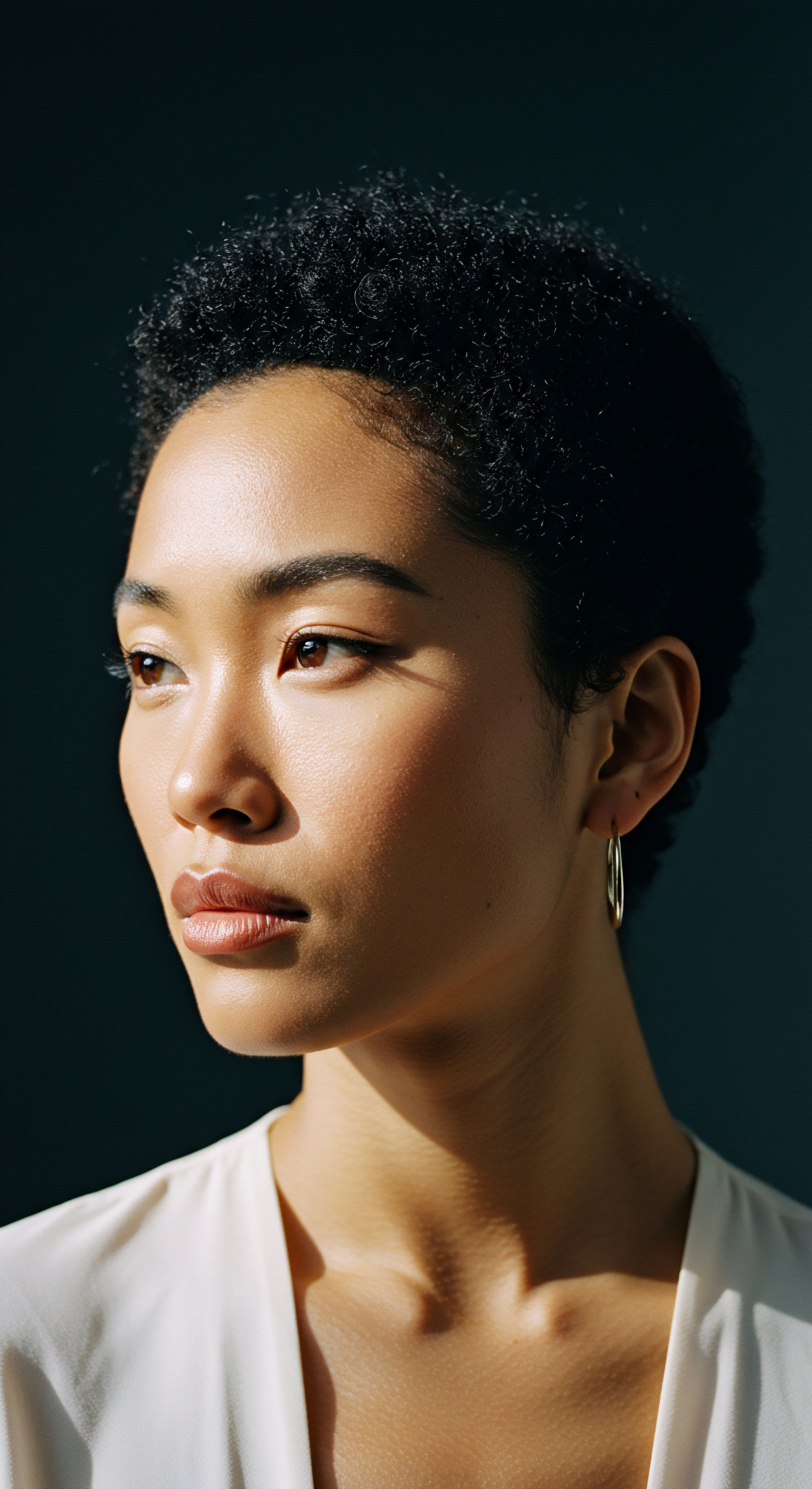
Heat Styling and Thermal Reconditioning
While celebrating natural texture remains a strong current in contemporary hair care, heat styling and thermal reconditioning have also played a role in the history and evolution of textured hair aesthetics. The hot comb, for instance, became a prominent tool in the early 20th century, offering a temporary way to straighten hair, often for purposes of conformity or perceived professionalism. This practice, while providing a desired aesthetic, also carried risks of heat damage.
Today, flat irons and blow dryers continue to be used to achieve straightened or stretched looks. A safety-first approach to thermal styling is paramount for textured hair, which can be particularly vulnerable to heat damage due to its delicate structure and propensity for dryness. This approach necessitates the use of heat protectants, lower heat settings, and infrequent application.
Thermal Reconditioning, or Japanese straightening, represents a more permanent chemical process that alters the hair’s internal bonds to achieve a straight form. While offering lasting results, it requires significant commitment to maintenance and understanding of its potential impact on hair health.

The Complete Textured Hair Toolkit
The right tools are not merely implements; they are companions in the journey of textured hair care, each chosen for its specific interaction with coils and kinks.
| Tool Category Detangling |
| Specific Examples Wide-tooth combs, detangling brushes (e.g. Denman brush, flexible detangling brushes) |
| Purpose and Benefit Gently separates knots without causing breakage; distributes product evenly. |
| Tool Category Styling and Definition |
| Specific Examples Styling combs, rat-tail combs, flexi-rods, perm rods, hair clips |
| Purpose and Benefit Aids in parting, sectioning, and shaping curls; creates uniform curl patterns. |
| Tool Category Protection and Preservation |
| Specific Examples Satin/silk bonnets, pillowcases, scarves, hair ties (seamless, satin-covered) |
| Purpose and Benefit Reduces friction, prevents frizz, retains moisture, protects styles overnight. |
| Tool Category Drying |
| Specific Examples Microfiber towels, diffusers for blow dryers |
| Purpose and Benefit Minimizes frizz and friction during drying; preserves curl pattern. |
| Tool Category Selecting the right tools minimizes manipulation and maximizes hair health and style longevity. |
Beyond these, spray bottles for re-wetting hair, applicator bottles for oils and conditioners, and gentle hair ties are all essential. The deliberate choice of each tool reflects a commitment to treating textured hair with the sensitivity and respect it warrants, acknowledging its unique needs and celebrating its inherent beauty.

Relay
As we peel back the layers of textured hair care, we encounter a confluence where scientific understanding meets profound cultural resonance. The seemingly simple act of washing or styling becomes a complex dialogue, a relay of traditions, innovations, and identity markers passed from one generation to the next. What deeper truths lie within these practices, extending beyond the visible strands to touch the very core of self and community? This exploration demands a more precise lens, examining how historical contexts, societal pressures, and the evolving understanding of health intertwine with the intimate world of hair.
The connection between hair and identity is not merely symbolic; it is often deeply practical, influencing lived experiences and societal perceptions. Consider the persistent challenges faced by individuals with textured hair in professional or academic settings. Research indicates a tangible impact. A 2019 study, “The CROWN Research Study,” conducted by Dove in partnership with the CROWN Coalition, revealed that Black Women are 1.5 Times More Likely to Be Sent Home or Know of a Black Woman Sent Home from the Workplace Because of Her Hair.
This stark statistic underscores a reality where cultural expressions of hair, particularly natural styles, can directly impede economic opportunity and professional advancement. It is a powerful illustration of how external societal biases intersect with personal identity, turning a biological characteristic into a site of systemic discrimination. Such data compels us to consider the broader implications of hair traditions, recognizing them not as isolated aesthetic choices, but as deeply embedded components of cultural and social capital.
Hair care traditions are not just about aesthetics; they are complex dialogues shaped by history, society, and personal identity.

How Does Hair Discrimination Shape Identity and Care Practices?
The historical subjugation of textured hair, often deemed “unprofessional” or “unruly” within dominant Western beauty standards, has had a profound impact on cultural identity and hair care practices. This pressure led to widespread adoption of chemical relaxers and excessive heat styling, practices often associated with significant hair damage, including breakage, thinning, and scalp irritation. The desire for conformity, driven by societal expectations for employment, education, and social acceptance, often outweighed the health implications.
The ongoing natural hair movement represents a powerful counter-narrative, a reclamation of cultural identity through the celebration of natural texture. This movement has shifted care practices towards gentler methods, emphasizing moisture, protection, and the use of natural ingredients. Yet, the legacy of discrimination persists, compelling legislative efforts like the CROWN Act in the United States, which prohibits discrimination based on hair texture or protective hairstyles. The very necessity of such legislation speaks volumes about the deep-seated biases that continue to influence how textured hair is perceived and treated in society.
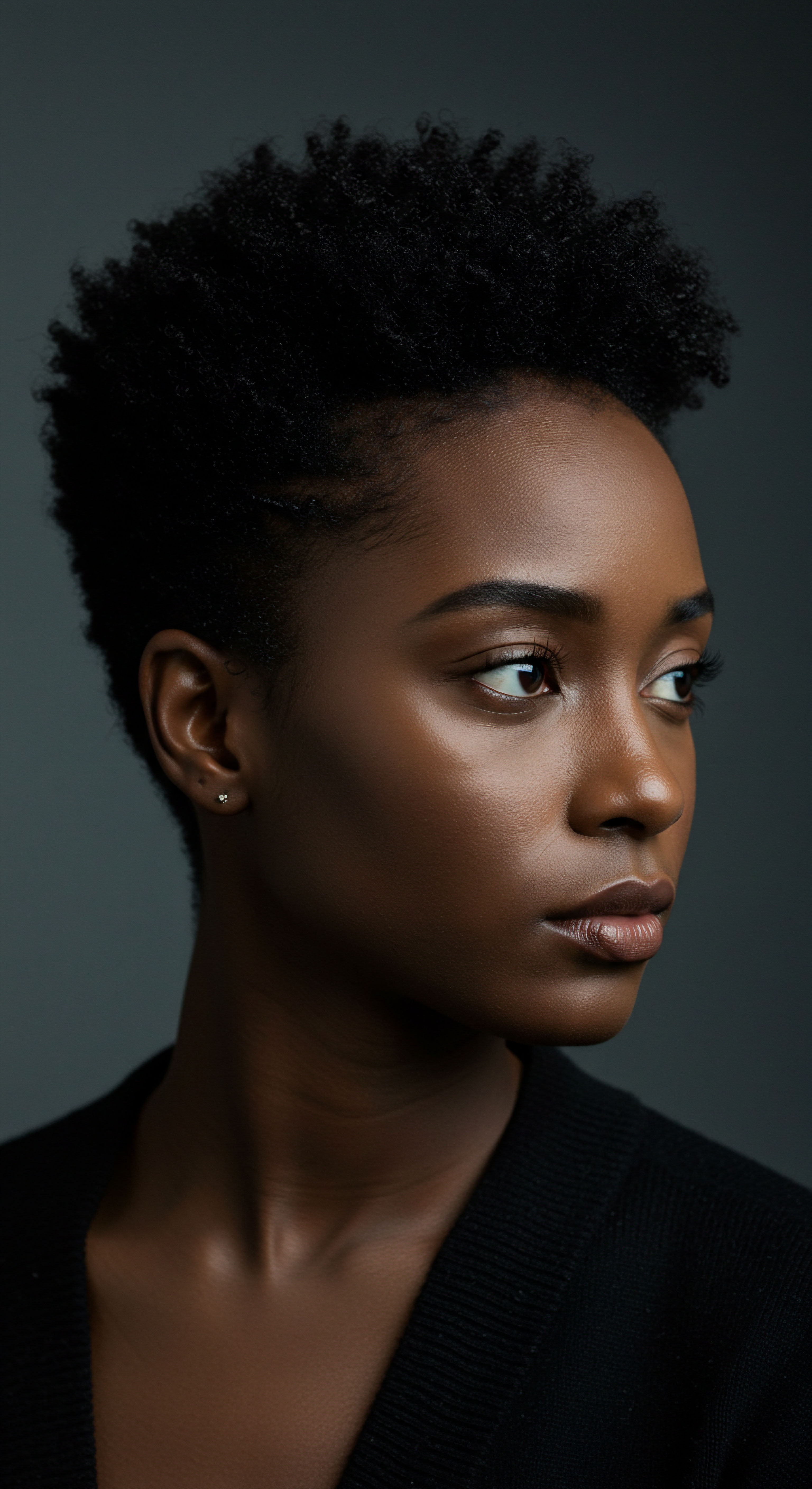
The Interplay of Traditional Knowledge and Modern Science
Textured hair care traditions are a rich repository of ancestral wisdom, often predating modern scientific understanding. Many traditional practices, such as oiling the scalp, using natural ingredients like shea butter and coconut oil, and protective braiding, align remarkably well with contemporary trichological principles. These practices, passed down through oral traditions and lived experience, intuitively understood the need for moisture retention, scalp health, and minimal manipulation for fragile hair.
Modern science now provides the empirical framework to explain why these traditional methods are effective. For instance, the occlusive properties of certain natural oils help to seal in moisture, a critical need for hair with a tendency towards dryness. The protective nature of braids reduces friction and exposure to environmental aggressors, mitigating breakage.
The convergence of traditional knowledge and scientific validation strengthens the argument for a culturally sensitive approach to hair care, one that respects the wisdom of the past while leveraging the advancements of the present. This synthesis encourages a nuanced understanding, moving beyond simplistic notions of “old” versus “new” to a harmonious integration.

Socioeconomic Factors and Access to Care
Access to appropriate textured hair care products and services has historically been, and remains, a significant socioeconomic factor. In many communities, especially those with limited resources, specialized products can be expensive or difficult to find. This disparity often forces individuals to rely on less suitable, mass-market products that may not adequately address the unique needs of textured hair, potentially leading to dryness, breakage, or scalp issues.
The beauty supply industry, while serving as a vital resource, also presents complexities. While offering a wide array of products, the ownership and economic benefits do not always flow back into the communities they serve. This economic dimension highlights a broader issue of self-determination and community empowerment within the beauty landscape. Initiatives that support Black-owned businesses and increase accessibility to culturally relevant and healthy hair care options are crucial for fostering equitable well-being.
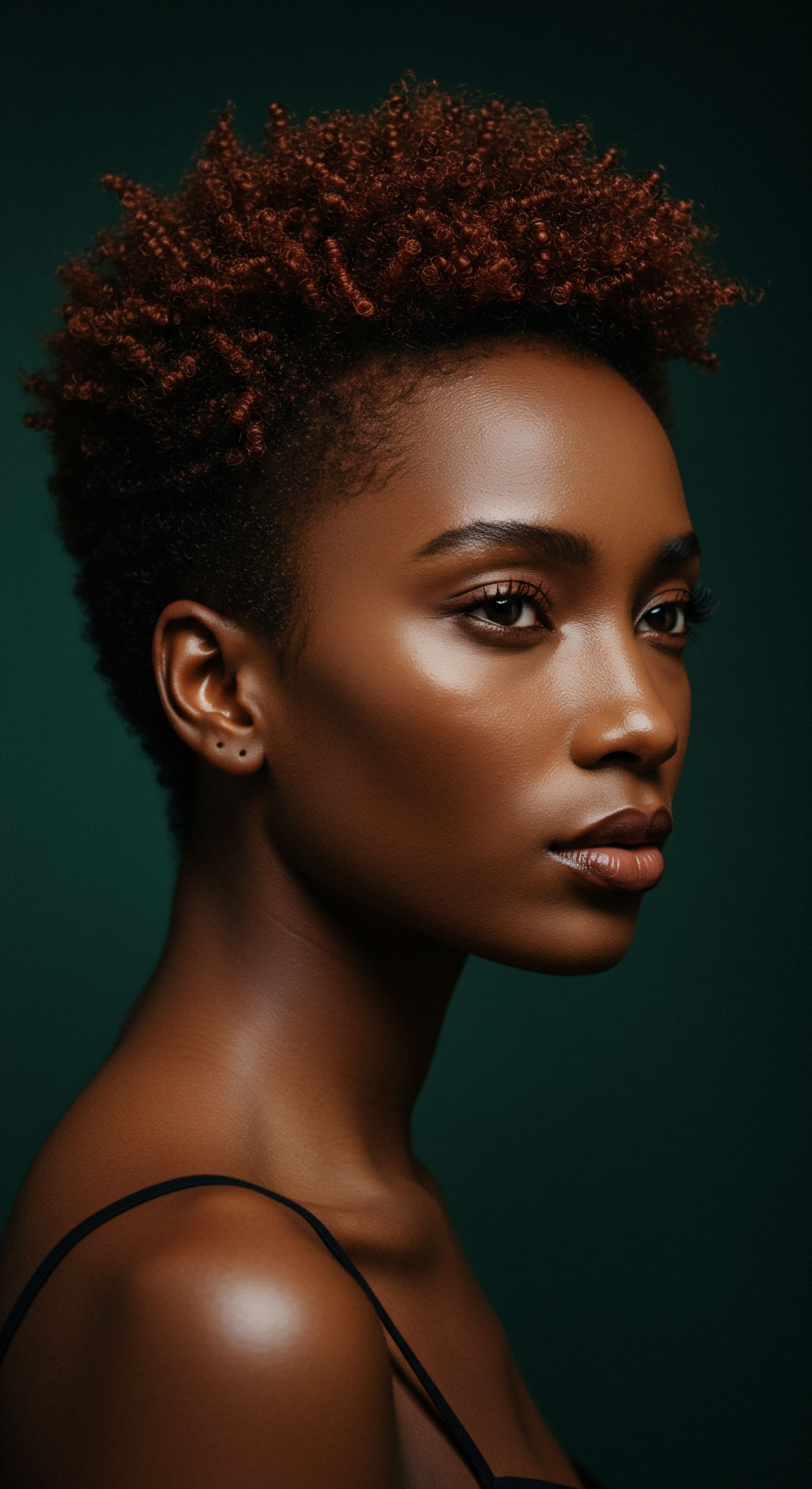
Cultural Symbolism and Hair as Communication
Across diverse cultures, textured hair has served as a powerful medium of communication, conveying social status, marital status, age, spiritual beliefs, and even tribal affiliation. In many West African societies, for example, intricate braiding patterns were not merely decorative; they were a form of non-verbal communication, telling stories of lineage, social standing, and personal journeys. The styling of hair was often a communal activity, strengthening bonds and transmitting cultural values from elder to youth.
This rich symbolism continues today. For many, the choice to wear natural hair is a statement of pride, a connection to heritage, and an assertion of identity in a world that often pressures conformity. The vibrant array of styles—from locs and twists to afros and intricate braids—each carries layers of meaning, reflecting personal aesthetics while simultaneously resonating with a collective cultural consciousness. Hair becomes a canvas for self-expression, a visible declaration of belonging, and a testament to resilience.

Reflection
The journey through the intricate world of textured hair care traditions reveals far more than techniques and products. It unearths a profound interplay of identity, history, science, and societal currents. The strands that grow from our scalps are not isolated entities; they are living testaments to lineage, resilience, and an ever-evolving cultural dialogue.
To understand textured hair is to appreciate a unique biological marvel, to respect ancestral wisdom, and to recognize the enduring power of self-expression in the face of prevailing norms. This appreciation calls for a mindful engagement, one that honors the past, celebrates the present, and anticipates a future where every curl, coil, and kink is recognized for its inherent beauty and its undeniable place in the grand narrative of human experience.
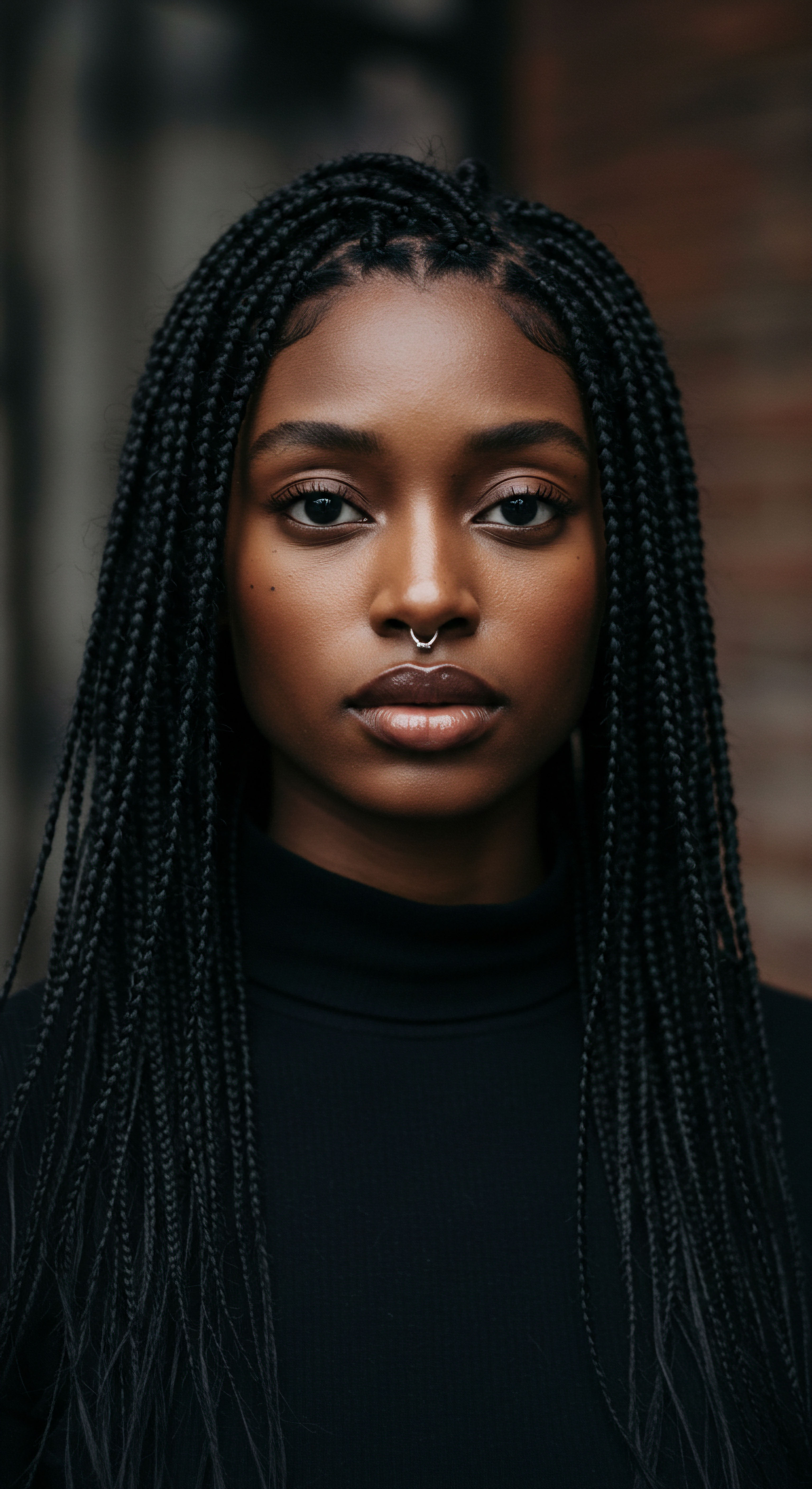
References
- Dove CROWN Research Study. (2019). The CROWN Research Study ❉ The Impact of Hair Discrimination on Black Women in the Workplace. Dove.
- Walker, A. (2019). The African-American Hair and Skin Care Handbook. Wiley.
- Banks, I. (2000). Hair Matters ❉ Beauty, Power, and the Politics of African-American Women’s Hair. New York University Press.
- Powell, T. (2013). Hair ❉ A Cultural History of Hair Fashion in America. Dover Publications.
- Gabourey, S. (2017). The Science of Hair ❉ A Comprehensive Guide. Academic Press.
- Patel, V. (2021). Trichology and Hair Care ❉ A Practitioner’s Guide. CRC Press.
- Byrd, A. (2001). Hair Story ❉ Untangling the Roots of Black Hair in America. St. Martin’s Press.
- Thompson, S. (2018). The Cultural Politics of Black Hair. Routledge.